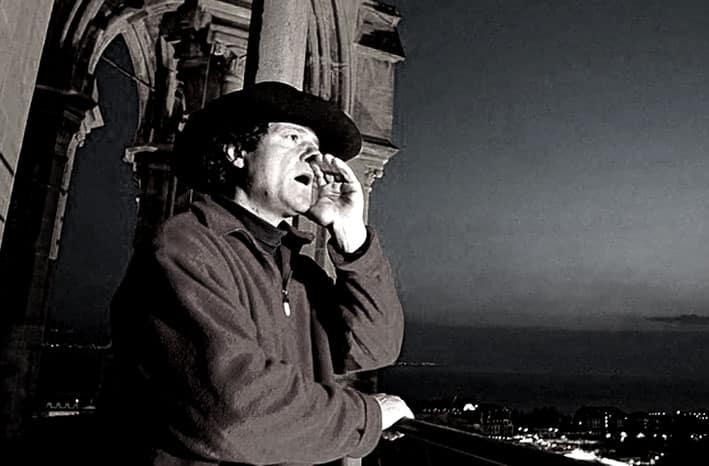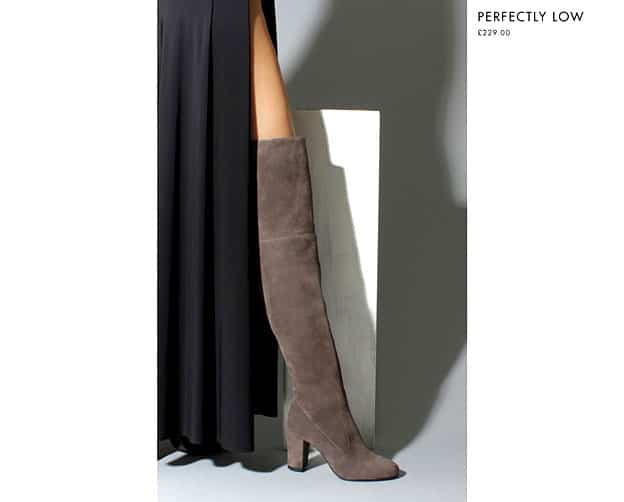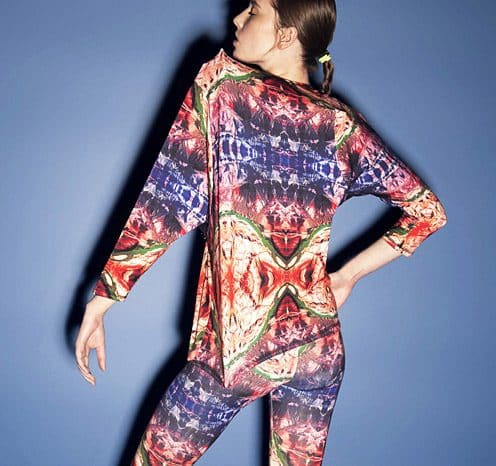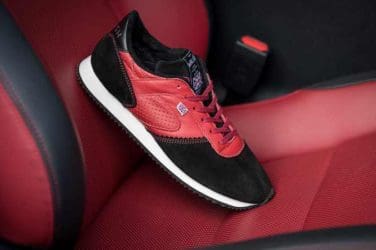words Chris Zacharia
When it comes to shopping, men can be divided into two categories. There are those who absolutely relish it, prevaricating for ages over which scarf best matches their vintage socks, and those who do everything to avoid it, whose outfits are mostly composed of Christmas gifts from concerned relatives. I’m somewhere in the middle.
Both groups have something in common, however. Traditional shopping does not serve them very well. It’s time-consuming, stressful, and more often than not you end up with the wrong thing.
Even online shopping doesn’t solve the problem. With so many retailers offering so much online, not to mention jumble sales like eBay, buying clothes on the internet can be just as lengthy as going to the shops. And with an even wider selection than any high street, the paralysis of endless choice can be worse. It’s no surprise that research carried out by Ecommerce Platform shows that when shopping online, men are likely to stop shopping as soon as they find the first workable product.
Yet the internet’s revolutionary power lies in being able to offer much more than shopping from the comfort of your home. By analysing large amounts of consumer data, retailers can streamline the shopping experience. A new breed of smart fashion firms are reinventing the way we shop for clothes, offering all the style and none of the shopping.
The Chapar, an online personal stylist service named after the fearless couriers of ancient Persia, are one of the most successful of the new wave. Founded by a father-and-son team, Joe and Sam Middleton, The Chapar offers a bespoke sartorial service to each customer, curating your wardrobe with big-name brands and lesser-known ‘discovery’ labels. This full-service model effectively allows you to outsource your shopping to a personal stylist without sacrificing your dress sense. Since being established in 2012, The Chapar have rapidly built a loyal following in the tens of thousands.
After signing up, The Chapar asks you to fill out a simple questionnaire, prompting you to select your preferred styles. From classic to preppy to urban, it’s all here. Shortly after, a personal stylist gets in touch to talk you through your choices, finding out more about what you like to wear. What kind of job do you have? Do you bother with accessories? The stylist ekes out information about your lifestyle in order to form a thorough picture of your sartorial needs.
Finally, a trunk is sent to your door, with hand-picked clothes and accessories, all explained by your stylist in the personalised literature. Whatever you like, you can keep; anything else you just send back in the trunk, free of charge. You’ve got ten days to decide, and a handy little outfit suggestion card to help you pull everything together.
The Chapar’s success is owed in part to its meticulous understanding of each individual customer. Part-tech, part-person, this combination of data and people allows The Chapar to tailor each clothing trunk specifically to the customer in question.
It sounds too good to be true. Surely your stylist can’t predict what you’ll like straightaway? And doesn’t actively picking out clothes help you decide what you want? Isn’t it like having your mum do your shopping for you?
My first conversation with one of The Chapar’s stylists eases my fears. Emma is easy-going and friendly, a world away from the haute couture snobbery that you might associate with stylists. Her probing questions help me to clarify what it is that I like about my clothes.
“So what do you tend to look for when you’re choosing jackets?” she asks.
“Just, like…not really long ones, you know? Like, only down to the waist” I clumsily offer. I go on to explain that I don’t like coats to be too long, without buttons or without a ‘proper’ collar.
“How fussy am I, compared to your other customers?” I ask.
“We’ve had fussier” she laughs.
The whole process feels natural, helping to define what types of clothing you like and why. Having to explain your preferences to others forces you to ask yourself what about the clothing it is that you like, rather than just blindly entering a shop with only a vague idea about what you want.
A few days later my trunk arrives. It’s a surprisingly small affair, intelligently packaged, with every piece of clothing in perfect condition. Within I find eighteen items – Emma tells me that it differs from trunk to trunk, with the number usually between ten and twenty. I’m excited to open it: the whole process builds up expectation. Will Emma’s choices actually suit me?
Everything I try fits perfectly. I shouldn’t be surprised – Emma asked for my measurements – but it’s definitely welcome; after all, the biggest problem with people buying you clothes is size. Seams hug my shoulders snugly, sleeves wrap my arms comfortably and brogues encase my feet as though carved especially for them.
A couple of the items are absolute gems. A ‘friday shirt’ by Hentsch Man (£105) immediately wins me over. Its ambrosial softness, guaranteed by the chambray cotton, and simple, elegant design place it firmly on the ‘keeping it’ list. A light denim, sky-blue colour gives it excellent colour-contrast potential, especially with the charcoal Dockers I find deeper in the trunk. Without even looking in my wardrobe, I can think of dozens of outfits it would improve.
A ribbed quilted jacket by Dutch maestros Scotch & Soda (£149) is another hit. Filled with down and properly padded, it’s properly cosy to wear, but its no-nonsense, urban-warfare cut adds a much-needed dash of feral youth to my look. After a few turns in front of the mirror, I know I’m going to keep it. Clearly, Emma’s got a good eye for clothes – and, more importantly, an impressively quick grasp of my taste.
The rest of my trunk is nice without being fully persuasive. A black Barbour jacket is too anonymous; an otherwise-lovely Hackett lumberjack shirt is rendered unwearable by elbow patches; and mesh-effect Vico smart-casual trainers are too self-consciously futuristic for my taste. The rest of the clothes are all excellent choices, except that they are too dark, a smattering of black and grey where colour is preferred. Nonetheless, it’s all well-considered, tasteful and maddeningly tempting; only one item is dismissed out of hand, a totally unpalatable long-sleeved maroon t-shirt by Hartford.
I call Emma back to talk through the trunk. As I’m explaining my choices to her, I realize that this is The Chapar’s hidden strength. By carefully evaluating each trunk with a personal phone call, an emotional relationship is established between customer and stylist, helping to build trust and enhance how well the clothes match your style. After listening to my feedback, she recommends that I send back the trunk, minus the shirt and jacket, so that she can replace the dark colours with something brighter.
A few days after taking the trunk to a DPD drop-off point, I’m faced with an entirely new one – and a whole host of tough decisions. Unsurprisingly, the second trunk is an improvement on the first. This is, after all, how it should work: each trunk sharpens The Chapar’s grasp of your fashion sense, helping to hone their selections until you look like George Clooney.
Basically, I want to keep all of it. There’s an alluringly bright, fire-engine red, fine-cotton jumper from Scottish artisans John Smedley (£99), reminiscent of a Primary School uniform. There’s a crispy ‘Poplin shirt’ with hidden Ace Ventura-style jungle motifs from stars of the first trunk Scotch & Soda (£79), its skinny-fit cut hugging the contours of my body with remarkable faith. And there’s an airy, baby-pink Oxford shirt from Ralph Lauren (£90), the kind of thing I could feasibly wear to both a raucous frat-house pool-party and a day at the Natural History museum. The diversity of The Chapar’s brands makes you want to branch out, each trunk an education in what’s out there. It’s a wonderfully enjoyable way to discover innovative new labels.
After some tough choices (sorry, silky Hackett jumper), I send the second trunk back, my wardrobe significantly bolstered. Despite initial skepticism, The Chapar’s system undoubtedly works. Not only does it eliminate the hassle of shopping, where you spend half of your Saturday in the shops and still return empty-handed, it also draws you out of your comfort zone, revealing new styles from creative international labels. And, by intelligently analysing your previous choices, each trunk is better than the last. The Chapar has to be the easiest way to dress well and look good – whether or not you love shopping.
For more information visit www.thechapar.com
words Chris Zacharia













